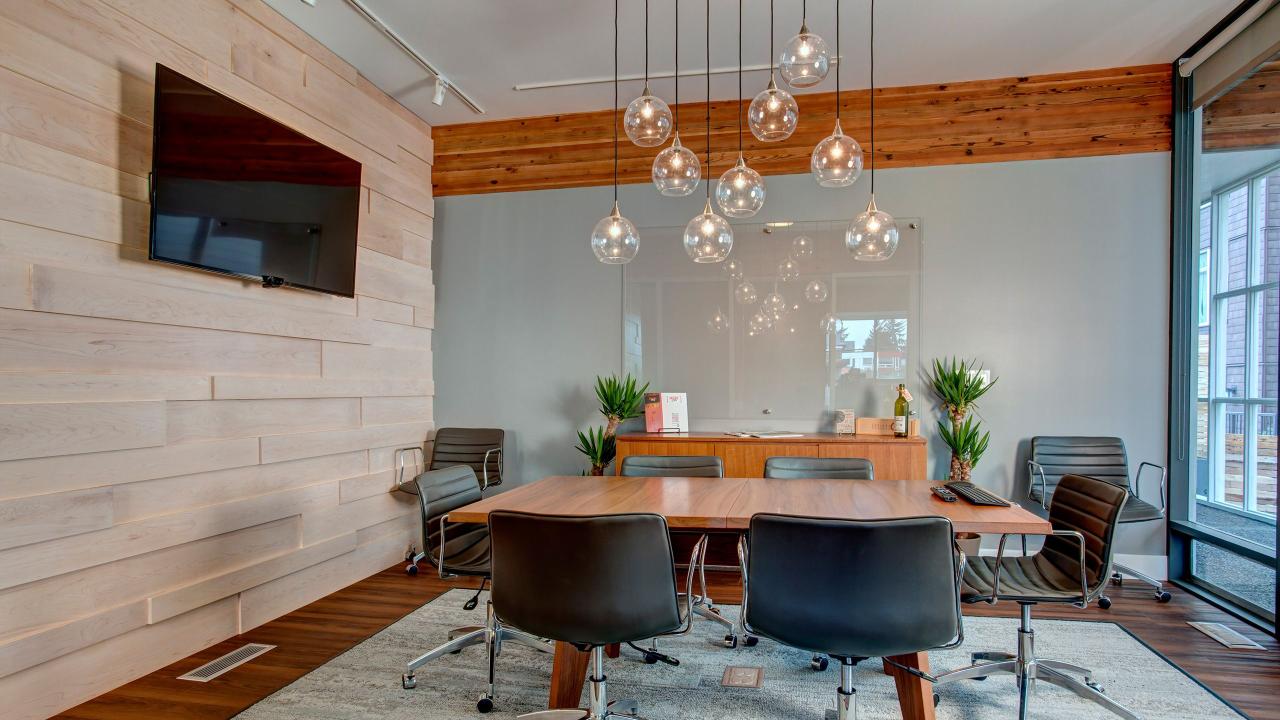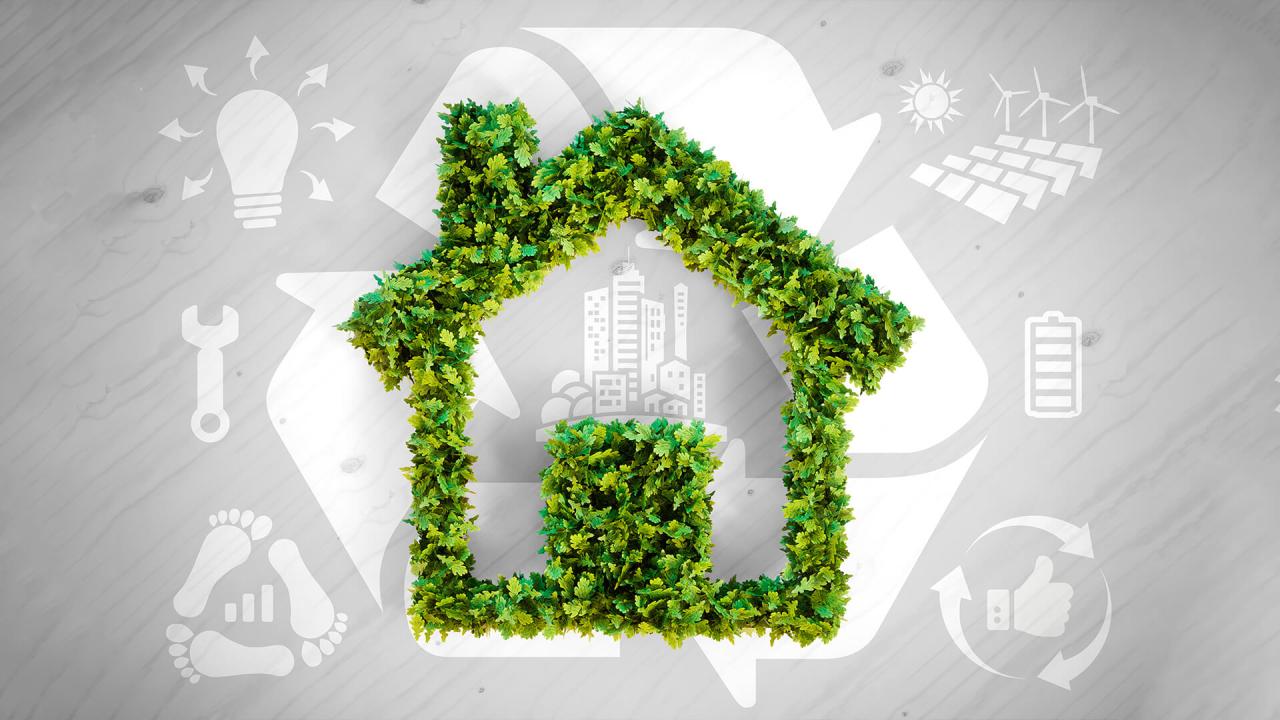The landscape of commercial real estate is undergoing an unprecedented transformation, moving far beyond the traditional confines of mere office buildings and retail storefronts. Driven by rapid technological advancements, profound shifts in work culture, evolving consumer behaviors, and a heightened emphasis on sustainability, commercial spaces are being reinvented to meet the demands of a dynamic global economy. For businesses, investors, developers, and urban planners, comprehending these ongoing evolutions is not just a matter of staying current, but a strategic imperative for long-term success and resilience. This comprehensive article delves into the intricate ways commercial spaces evolve, exploring the fundamental drivers behind these shifts, dissecting the emerging trends across various sectors, and offering strategic insights into navigating this exciting yet challenging new era for the built environment.
The Catalysts for Commercial Evolution

The dramatic shifts in commercial real estate are a direct response to powerful, interconnected forces that are reshaping how we work, shop, and interact.
A. Technological Revolution and Digital Transformation
- Remote and Hybrid Work Models: The most significant catalyst has been the widespread adoption of remote and hybrid work. This has fundamentally altered the role of the traditional office, shifting demand from sheer square footage to spaces that foster collaboration, innovation, and company culture. Businesses now need offices that are destinations, not just default workplaces.
- E-commerce Dominance: The exponential growth of online retail has forced a complete rethinking of physical retail spaces. Traditional brick-and-mortar stores are no longer just transaction points but experiential hubs, showrooms, and last-mile fulfillment centers. This has also fueled explosive growth in logistics and warehousing.
- Artificial Intelligence (AI) and Automation: AI is being integrated into building management systems, predictive maintenance, security, and space optimization. Automation is transforming industrial processes and logistics, impacting the design and functionality of warehouses and manufacturing facilities.
- Internet of Things (IoT) and Smart Buildings: The proliferation of connected sensors and devices in buildings provides real-time data on occupancy, energy usage, air quality, and security. This data enables smart building management, optimizing operations, enhancing user experience, and improving sustainability.
- Enhanced Connectivity: The rollout of 5G, fiber optics, and advanced Wi-Fi networks is crucial for supporting smart building technologies, seamless remote work, and data-intensive commercial operations, making reliable connectivity a prime consideration for any commercial space.
B. Shifting Work Culture and Workforce Expectations
- Focus on Employee Well-being: There’s a heightened emphasis on creating commercial spaces that prioritize the health, well-being, and comfort of employees. This includes better air quality, natural light, ergonomic design, and access to wellness amenities. This focus is directly linked to productivity and talent retention.
- Demand for Flexibility: Businesses require greater flexibility in their real estate commitments, leading to increased demand for co-working spaces, flexible lease terms, and adaptable office layouts that can scale up or down as needs change. The “lease-as-a-service” model is gaining traction.
- Collaborative Environments: Even with remote work, the need for in-person collaboration remains. Offices are evolving to offer more communal areas, meeting rooms with advanced tech, and informal gathering spaces to foster teamwork and innovation.
- Talent Attraction and Retention: In a competitive labor market, the quality and amenities of commercial spaces play a significant role in attracting and retaining top talent. Modern, appealing workplaces are a powerful recruitment tool.
- Work-Life Integration: Employees are looking for spaces that seamlessly blend work with personal life, influencing the demand for mixed-use developments that offer retail, dining, fitness, and residential options alongside workplaces.
C. Sustainability Imperatives and ESG Focus
- Climate Change Mitigation: The commercial building sector is a major contributor to global greenhouse gas emissions. There’s immense pressure and commitment to reduce energy consumption, adopt renewable energy, and utilize low-carbon building materials to combat climate change.
- Environmental, Social, and Governance (ESG) Standards: ESG criteria are now central to investment decisions and corporate strategies. Investors are increasingly favoring commercial properties that demonstrate strong sustainability performance, social responsibility, and transparent governance, influencing capital flows and property valuations.
- Resource Efficiency: Emphasis is placed on optimizing resource use through water conservation (e.g., greywater recycling, efficient fixtures), waste reduction (e.g., composting, recycling programs), and sustainable material sourcing.
- Resilience to Climate Risks: Commercial properties are being designed and retrofitted to be more resilient to the impacts of climate change, such as extreme weather events, rising sea levels, and urban heat islands, protecting long-term asset value.
D. Evolving Consumer Behavior and Demographics
- Experiential Retail: Consumers increasingly seek experiences, not just products, from physical retail. This drives the creation of retail spaces that offer immersive brand experiences, entertainment, dining, and community engagement.
- Demand for Local Amenities: The shift to suburban and mixed-use living means consumers often prefer accessing goods and services closer to home. This fuels demand for local commercial spaces in walkable, convenient neighborhood hubs.
- Health and Wellness Focus: Post-pandemic, there’s a heightened consumer focus on health and hygiene, influencing design choices in retail and office spaces to include better ventilation, contactless technology, and accessible wellness features.
- Aging Population’s Needs: An aging global population influences the design of all commercial spaces, requiring greater accessibility, comfortable seating, and clear navigation, particularly in retail and healthcare facilities.
Key Trends Redefining Commercial Spaces

These catalytic forces are manifesting in several transformative trends across various segments of commercial real estate.
A. The Reimagined Office Space
- Hybrid-First Design: Offices are being designed primarily for hybrid work models, featuring a mix of collaborative zones, hot-desking areas, quiet focus pods, and advanced video conferencing technology to seamlessly connect in-office and remote teams. The traditional one-desk-per-employee model is fading.
- Flex Space and Co-Working Integration: Demand for flexible office solutions is soaring. Landlords are increasingly offering “flex space” within their buildings, and co-working operators are expanding, providing agile solutions for businesses of all sizes, reducing long-term lease commitments.
- Amenity-Rich Environments: To entice employees back and foster well-being, offices are becoming amenity-packed, offering features like fitness centers, healthy food options, outdoor spaces, wellness rooms, and concierge services. The office is now a “campus” or “club.”
- Smart Office Technology: IoT sensors track occupancy, optimize lighting and HVAC based on real-time usage, and manage desk booking systems. AI can analyze space utilization to inform future design and optimize energy consumption, leading to truly intelligent workplaces.
- Emphasis on Indoor Air Quality (IAQ): Post-pandemic, there’s a paramount focus on advanced HVAC systems, filtration, and monitoring to ensure superior indoor air quality, contributing to employee health and confidence.
B. The Evolving Retail Landscape
- Experiential Retail Destinations: Successful retail spaces are transforming into immersive destinations where shopping is just one component. They integrate dining, entertainment, cultural events, and community gathering spaces, creating reasons for consumers to visit and linger.
- Omni-Channel Integration: Physical stores are becoming crucial components of an omni-channel strategy, serving as showrooms, click-and-collect points for online orders, and return centers. The lines between online and offline retail are blurring.
- Smaller Footprints and Pop-Ups: Brands are experimenting with smaller, more flexible physical footprints, including pop-up shops, to test markets, build brand awareness, and create unique, temporary experiences without large, long-term commitments.
- Last-Mile Fulfillment Centers: Urban and suburban retail spaces are increasingly being repurposed or designed to facilitate rapid last-mile delivery, blending traditional retail with logistics operations to meet consumer demand for instant gratification.
- Local and Neighborhood Retail: With people spending more time in their local communities (due to remote work), demand for convenient, neighborhood-centric retail and services has surged, revitalizing local high streets.
C. The Industrial and Logistics Boom
- E-commerce Driven Demand: The relentless growth of e-commerce continues to fuel massive demand for warehouses, distribution centers, and fulfillment centers, particularly those strategically located near population centers for rapid delivery.
- Automation and Robotics Integration: New industrial facilities are being designed to accommodate advanced automation and robotics, requiring higher clear heights, reinforced floors, and specialized power infrastructure.
- Multi-Story Warehouses: In land-constrained urban areas, developers are building multi-story warehouses to maximize vertical space and bring logistics operations closer to consumers, reducing delivery times and costs.
- Cold Storage Facilities: The growth of online grocery delivery and pharmaceutical needs is driving significant investment in specialized cold storage and refrigerated warehouse facilities.
- Data Centers: The digital economy’s insatiable demand for data storage and processing is leading to a continuous boom in data center construction, requiring robust power infrastructure, cooling systems, and high security.
Impacts and Benefits of Commercial Real Estate Evolution
The transformation of commercial spaces is yielding profound impacts and offering significant benefits across the economy and society.
A. Economic Benefits and Market Efficiency
- Increased Productivity and Innovation: Well-designed, flexible, and amenity-rich offices can boost employee morale, foster collaboration, and lead to higher productivity and innovation for businesses.
- Optimized Space Utilization: Smart building technologies and flexible layouts allow companies to optimize their use of space, reducing wasted square footage and potentially lowering real estate costs.
- New Investment Opportunities: The evolving landscape creates fresh investment opportunities in niche sectors (e.g., flex office operators, logistics parks, specialized life sciences labs) and in properties that can be adaptively reused.
- Enhanced Urban Vibrancy: Mixed-use developments and revitalized retail spaces contribute to more vibrant, walkable, and livable urban environments, attracting residents and boosting local economies.
- Reduced Operating Costs: Energy-efficient designs, smart building management, and optimized waste systems lead to significant long-term operational cost savings for property owners and tenants.
B. Environmental and Social Gains
- Reduced Carbon Footprint: Sustainable building practices, renewable energy integration, and energy-efficient operations in commercial spaces contribute significantly to reducing greenhouse gas emissions and combating climate change.
- Improved Health and Well-being: Better indoor air quality, natural light, and access to green spaces in commercial buildings lead to healthier and more comfortable environments for occupants, reducing illness and stress.
- Enhanced Resilience: Designing commercial properties with climate resilience in mind protects assets from extreme weather events, ensuring business continuity and long-term value preservation.
- Community Integration: Mixed-use and transit-oriented developments that seamlessly integrate commercial, residential, and public spaces can foster stronger communities and reduce urban sprawl.
Challenges and Strategic Navigation
Despite the immense opportunities, the evolution of commercial spaces presents significant challenges that require proactive strategies.
A. Challenges
- Obsolescence of Traditional Assets: Older, poorly located, or inflexible office buildings and traditional retail centers face rapid obsolescence, struggling to attract tenants and maintain value in the new landscape.
- Valuation Uncertainties: The rapidly changing nature of demand and use cases for commercial spaces can make traditional property valuation more complex and uncertain, affecting investor confidence.
- High Retrofit Costs: Upgrading existing buildings to meet new sustainability standards, technological requirements, and flexible design needs can involve substantial capital expenditure.
- Supply-Demand Mismatch: In some markets, there might be an oversupply of outdated office space coupled with a shortage of modern, amenity-rich, and flexible alternatives, leading to market inefficiencies.
- Data Security and Privacy: The increasing reliance on smart building technology and data collection in commercial spaces raises concerns about cybersecurity and tenant privacy, requiring robust protective measures.
- Regulatory Adaptation: Existing zoning laws and building codes may not be equipped to handle innovative mixed-use developments, vertical industrial parks, or highly flexible commercial models, creating regulatory hurdles.
B. Strategic Responses
- Invest in Modernization and Retrofitting: For existing assets, prioritize strategic investments in energy efficiency upgrades, smart technology integration, and flexible interior redesign to enhance their competitiveness and sustainability.
- Embrace Mixed-Use and Experiential Design: Develop or redevelop properties that offer a diverse mix of uses (residential, retail, office, entertainment) and focus on creating engaging, experiential environments that draw people in.
- Focus on “Flight to Quality” and Amenities: For office spaces, target premium, amenity-rich properties that prioritize employee well-being, connectivity, and collaborative spaces to attract and retain tenants.
- Diversify Portfolios: Investors should diversify their commercial real estate portfolios to include high-growth sectors like logistics, data centers, and life sciences, alongside reimagined office and retail.
- Leverage Data Analytics and PropTech: Utilize data insights from smart buildings and market trends to inform investment decisions, optimize operations, and anticipate future demands for commercial spaces.
- Prioritize Sustainability and ESG: Make sustainability a core tenet of commercial property development and management. Green certifications, energy performance, and social impact will be key drivers of long-term value and investor appeal.
- Foster Public-Private Collaboration: Work closely with urban planners and local governments to adapt zoning laws, streamline permitting, and align commercial development with broader community goals for sustainable and inclusive growth.
Conclusion
The evolution of commercial spaces is not merely a cyclical adjustment but a fundamental paradigm shift, driven by technology, culture, and environmental imperatives. From the dynamic reinvention of the office and the experiential transformation of retail to the relentless growth of industrial and logistics facilities, every segment of commercial real estate is adapting to a new normal. While challenges of obsolescence and investment uncertainties loom, the opportunities for innovation, value creation, and sustainable development are immense. By strategically embracing flexibility, prioritizing well-being and sustainability, and leveraging cutting-edge technology, developers, investors, and businesses can effectively navigate this exciting era, shaping commercial spaces that are not only profitable but also contribute to a more efficient, resilient, and human-centric built environment for the future. The future of work and commerce is being built, brick by digital brick.













